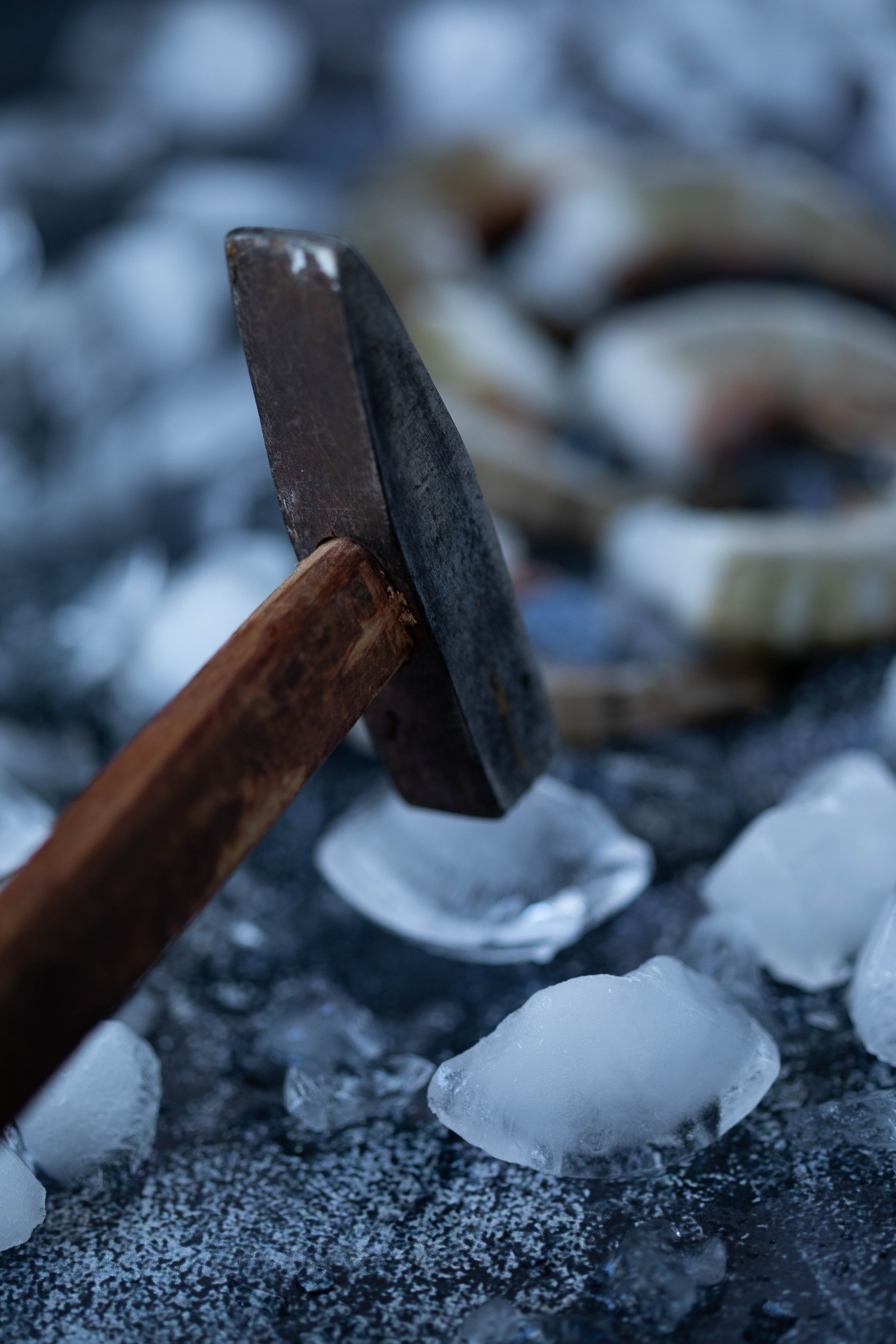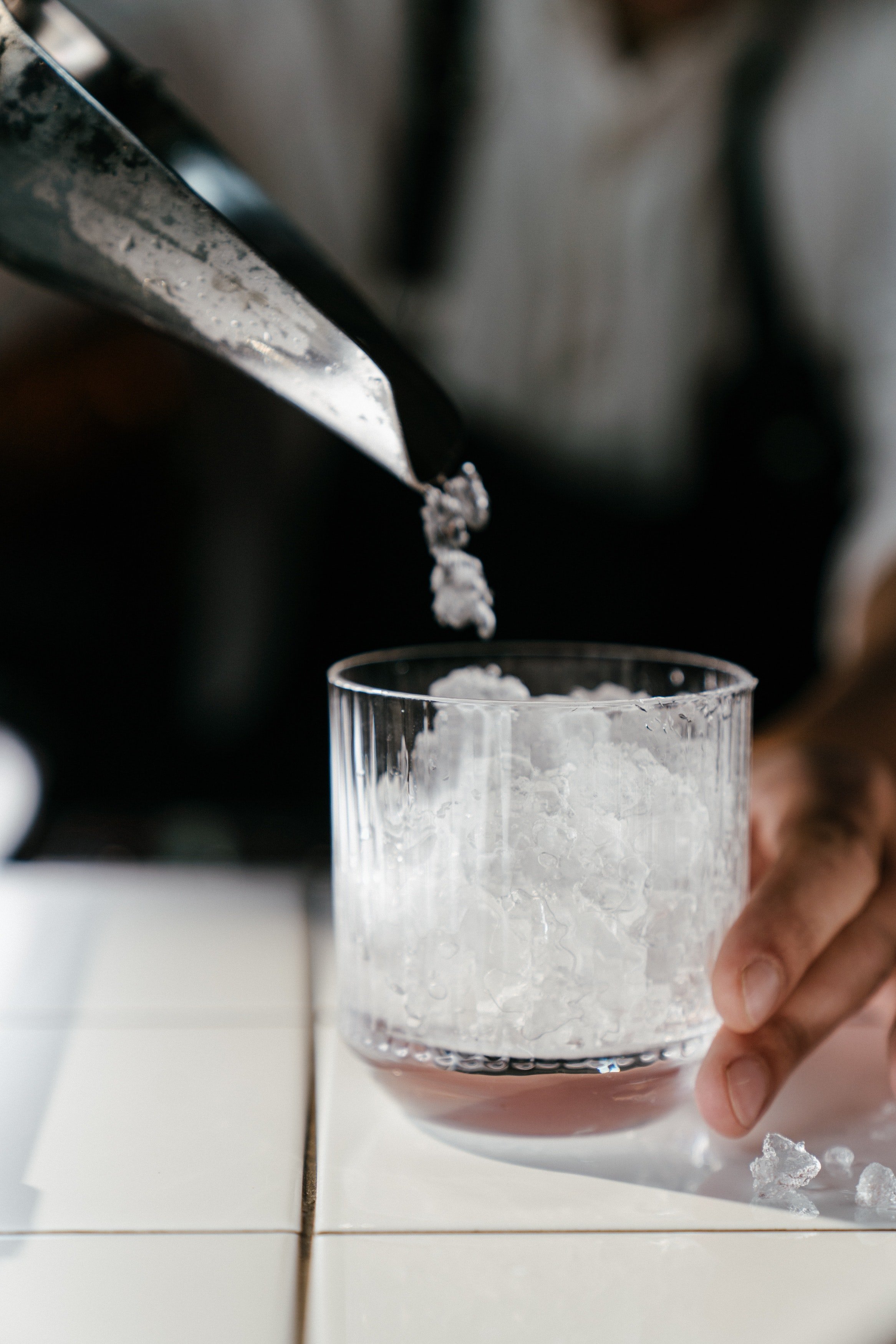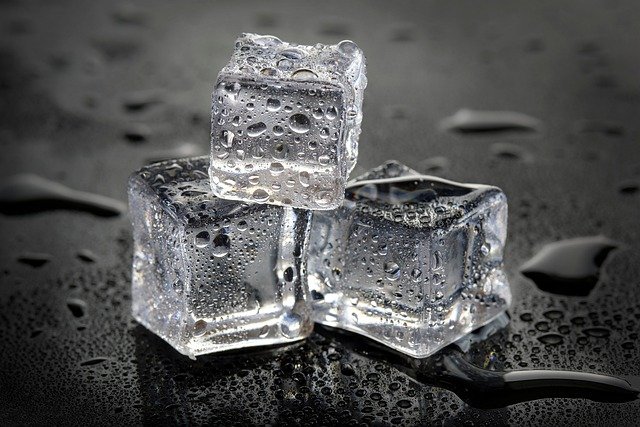Cocktail Ice - The Main Types

No matter your level of bartending skills, cocktail ice is the one ingredient that home bartenders often overlook. Yes, we all focus on our spirits, mixers and garnishes, but cocktail ice performs more than one function! It dilutes, brings different flavors together and mellows a potentially strong alcoholic base.
So, if you are looking to level up your home bartending game, as well as improve your drinks and maybe even impress your guests, keep reading!
Cocktail Ice and Its Many Forms
Cocktail ice comes in many different forms. However, most people don’t realize that many drinks call for a specific type of ice. Depending on the glassware, the level of dilution, or just the overall appearance, cocktail ice is a critical part to your cocktail. For the contemporary home bartender, there are three main types of ice: ice cubes, cracked ice and crushed ice.
Ice Cubes
The basic ice cube is perhaps the most common form of ice for the budding mixologist and the standard go-to for chilling cocktails. They are easy to make using whatever ice tray you have handy. If your freezer has an automatic ice maker, that’s even easier! Cubes generally melt slowly and supply the least amount of dilution.
You can get different trays to make different types of ice, some more specialized than others. It all depends what you plan to mix up!
Mixing Cubes are medium-sized (about 2 inches) and best used for: cocktail preparation, shaking and stirring.
Rock Ice, or Whiskey Stones, is best used for: drinks requiring minimal dilution (like straight liquor). They are literally just food-grade stones you can freeze. They keep your drink cold without diluting anything.
Collins Ice is just doubly-long ice cubes - around 4” x 2” x 2” - and best used for: Collins drinks (duh...), Highball drinks (such as our Summer Sipper) or any cocktail in a tall glass you’d like to jazz up a little.
Ice Rings are just that - doughnuts made of ice. You’ve probably seen them floating in punch bowls.
Novelty Ice Cubes come in all sorts of shapes and sizes. Now with silicone ice trays, it’s easy to make quirky ice cubes for your themed and novelty cocktails.
Cracked Ice
If cubes are difficult to use, are too chunky, or you simply prefer the texture of smaller pieces of ice within your drink, cracked ice is your next possibility.
Cracked Ice is best used for: warm weather drinks, drinks that require modest dilution. Remember, dilution isn’t bad! Melting ice also helps the flavors of your drink mix together.
Crushed Ice
The smallest pieces of ice, crushed ice is ideal for frozen drinks. Crushed cocktail ice can range from large crystals (like a snow cone) to the very fine crystals (found in a Slurpee).
Pebble Ice is just what it sounds like, and is best used for: warm weather drinks, tiki drinks, and drinks requiring modest dilution.
Julep Ice is crushed finer, usually irregular, small chips (like in the center photo below), and best used for: juleps, smashes, frozen drinks, and drinks requiring maximum dilution.
Who would have thought that there were so many different types of cocktail ice? Now that you’re armed with all this knowledge about the three main types of cocktail ice, keep them in mind next time you create your next cocktail! You’ll not only up your home bartending game, you’ll be crafting a memorable cocktail.




